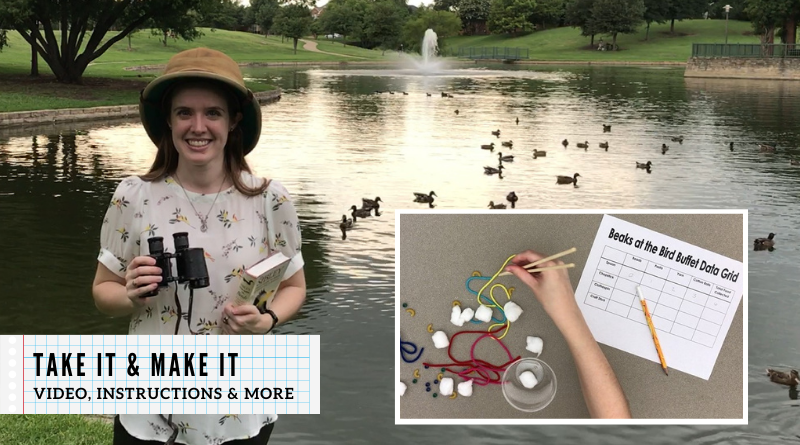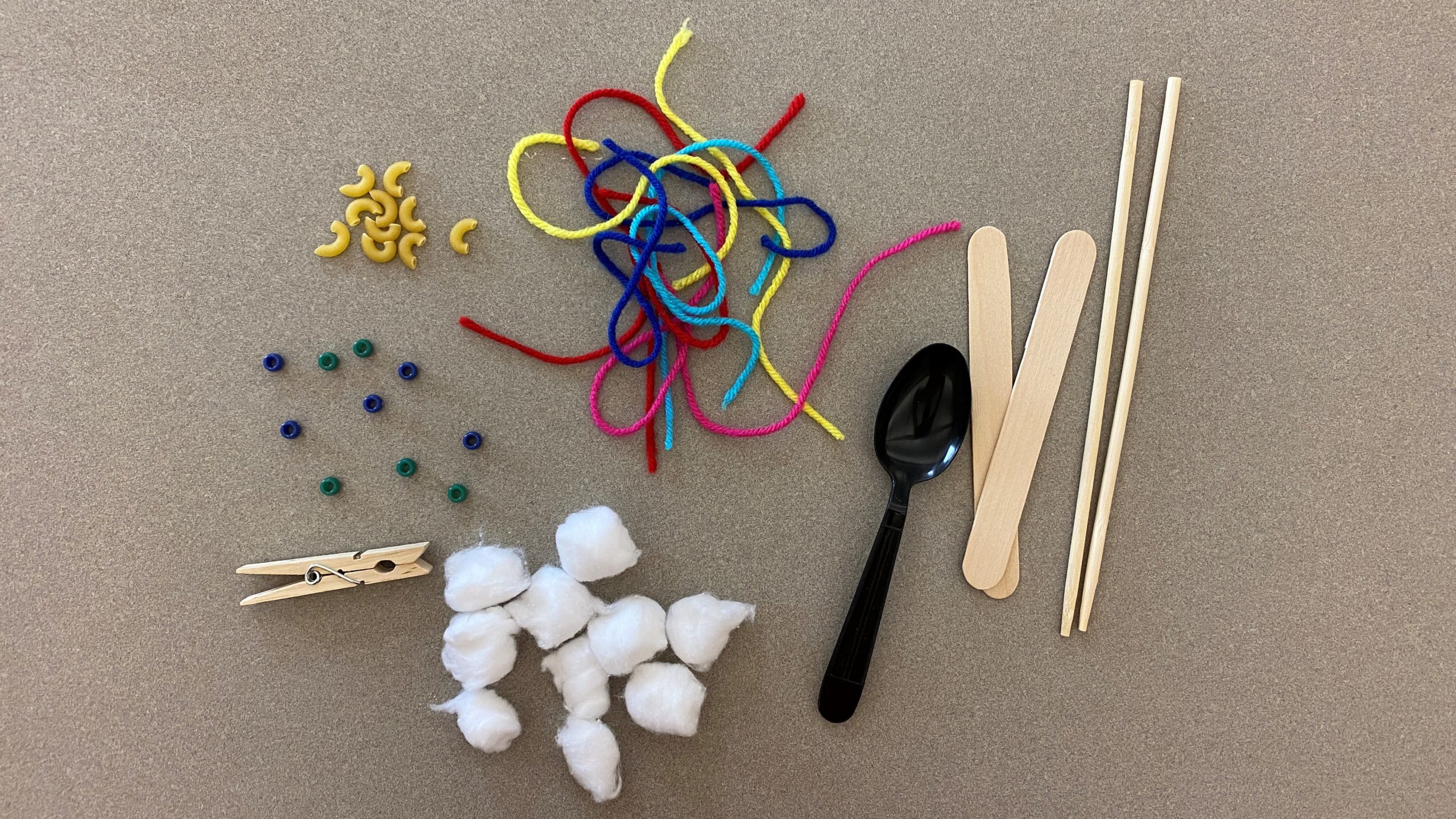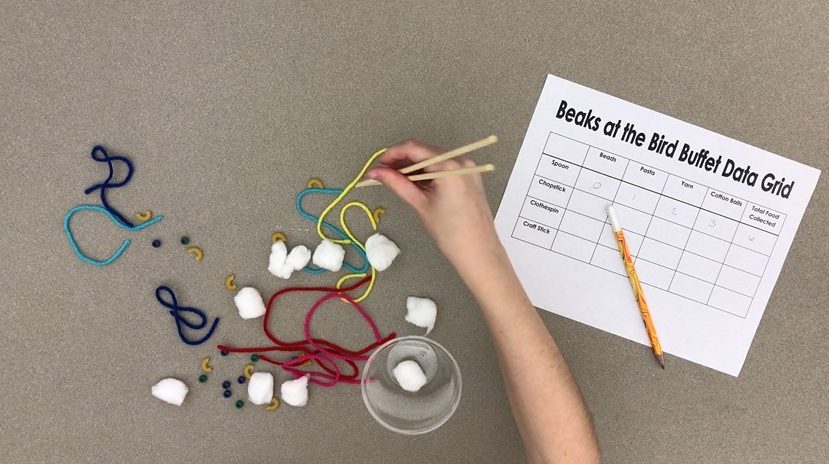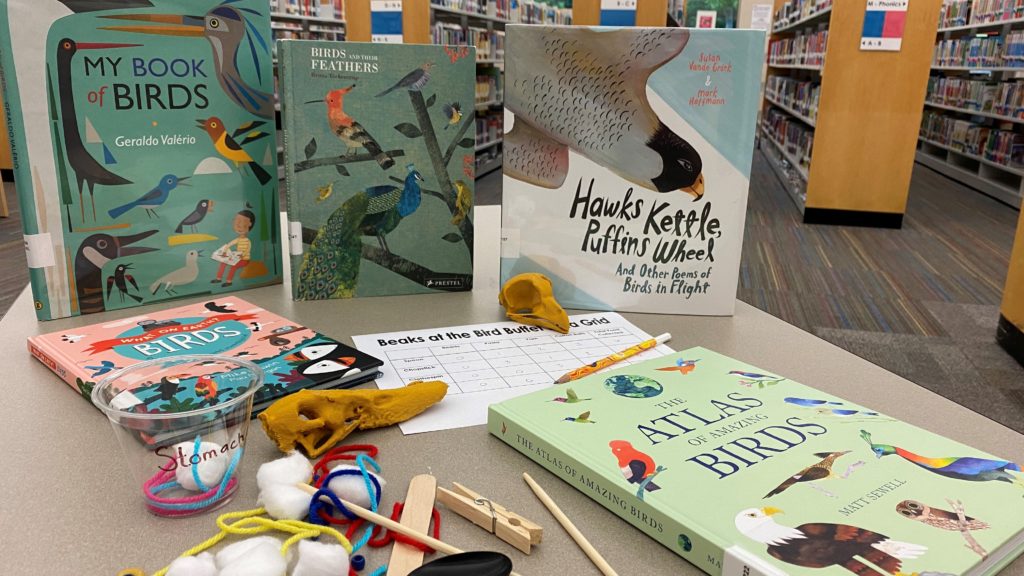
STEAM Connections: Beaks at the Bird Buffet
We can learn a lot about a bird’s lifestyle from the shape of its beak. Let’s take a look at some beaks and see what we can learn.
Content Overview
A bird’s beak is a bony elongation of its skull that is covered in keratin, the same material that makes up your hair and fingernails. Birds use their beaks as tools. Beaks help birds gather food, groom their feathers, defend themselves, and build their nests.
The shape of a bird’s beak gives us clues to figuring out its main source of food, as a bird’s beak is designed for eating a particular type of food. Let’s look at some different types of beaks.
Hands-On Exploration
- Raptors like owls, hawks, and vultures have grasping beaks. These beaks are hooked shaped which allows for tearing apart prey or carrion.
- Similar to a raptor’s beak is a cardinal’s heavy thick beak that they use to crack seeds.
- Birds like a spoonbill have a long, flat, scooping beak that scoops up food like fish or insects in the water.
- Ducks also get their food from the water. Their flat, shovel beaks allow them to scoop up fish or plants and then drain out water before swallowing.
- A hummingbird’s beak is long and thin, which allows it to reach into tight places for its food-like getting nectar out of a flower.
Activity Demonstration and Supplies
Now that we have seen different types of beaks, lets use everyday objects to explore how they work. You will need a clothes pin, a spoon, chopsticks and a craft stick – these are your beaks. A cup will serve as your bird’s stomach.
Let’s look at food: we have beans, elbow macaroni, yarn and cotton balls. Lay your food out on a table and select your first beak. See how much food you are able to pick up with your beak and move to your stomach in 30 seconds. Remember to pick up only one piece of food at a time!
Record how many of each food type you were able to pick up in your scientific observation sheets (handout available above)
Lay your food back out on the table and start over with a different beak.
Supplies you need:

- Clothes Pin
- Spoon
- Chopsticks
- Craft stick
- Cup
- Beads
- Pasta
- Yarn
- Cotton balls
- A stopwatch
Instructions:

1. Look at each of your beaks: a spoon, a clothespin, a craft stick and a pair of chopsticks. What type of beak do you think each one represents? Which foods do you think each beak will pick up the easiest?
2. Spread your “food” ( the beads, the pasta, the yarn, and the cotton balls) out in front of you.
3. Pick your beak. Use a cup as your bird’s stomach. For 30 seconds, pick up as much ‘food’ with your beak as you can and put it in the stomach. Take only one piece of food at a time.
4. Count how much of each food type you were able to pick up in 30 seconds. Record you results in your scientific observation sheet. Return the food and try again with another type of beak.
5. Look at your results. What is your conclusion about which beaks go best with which types of foods?
Talk About the Activity
- Which beak goes best with which types of food?
- Which of the beaks was a grasping beak? A scooping beak? A shovel beak? A probing beak?
- What other types of food can you ‘eat’ with your beaks?
Continued Learning
Birds live all around us. Take a nature walk together as a family and look for birds! Can you identify what kind of beak they have?
Use this Bird Search chart when you’re checking out your neighborhood!
Check It Out

We have plenty of books available from the library for you to learn more:
The Beak Book by Robin Page
Karl’s New Beak: 3D Printing Builds a Bird a Better Life by Lela Nargi
Beaks! by Sneed B. Collard
Birds: Discovering North American Species by Shirley C. Raines
My Book of Birds by Geraldo Valerio
Birds and their Feathers by Britta Teckentrup
Hawks Kettle, Puffins Wheel and Other Poems of Birds in Flight by Susan Vande Griek and Mark Hoffman
The Atlas of Amazing Birds by Mark Sewell
Be sure to check out our other STEAM Connections projects here on the blog for more family fun.




